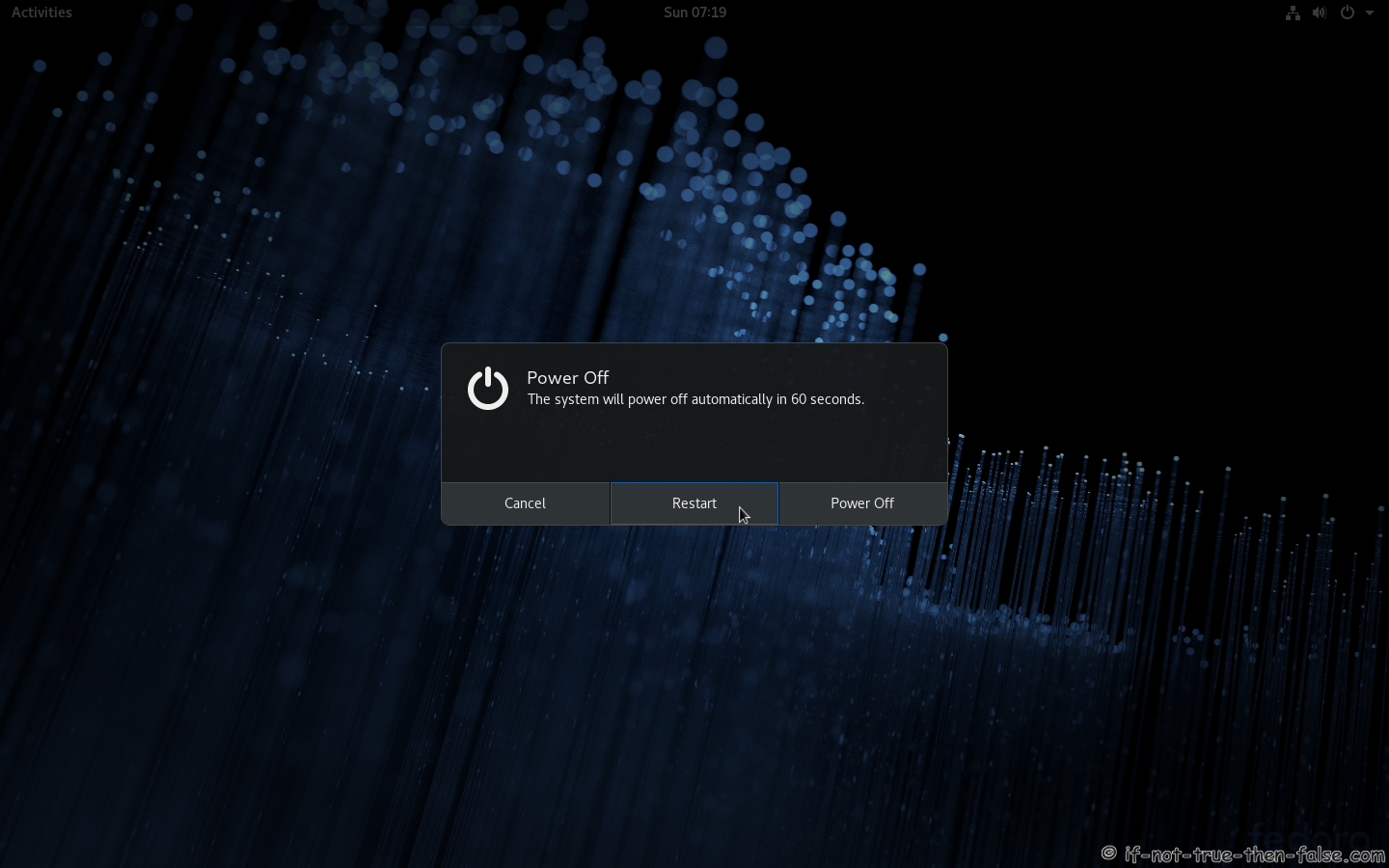
The line should look similar to the following: GRUB_CMDLINE_LINUX="rd.lvm.lv=rhel/root rd.md=0 rd.dm=0 vconsole.keymap=us $( & /usr/sbin/rhcrashkernel-param || :) rd.luks=0 vconsole.font=latarcyrheb-sun16 rd.lvm.lv=vg_rhel/swap rhgb quiet" Within the grub file, locate the line beginning with GRUB_CMDLINE_LINUX. Open the /etc/default/grub configuration file using a plain text editor such as vim. Log in to the root account using the su - command: $ su. To permanently change boot options, do the following. Then you will need to disable the graphical boot permanently - otherwise you will have to perform the previous procedure every time the system boots. If the system started successfully, you can log in normally. Press F10 or Ctrl+X to boot your system with the edited options.


The option may not be immediately visible use the cursor keys to scroll up and down. On this line, locate the rhgb option and delete it. In the list of options, find the kernel line - that is, the line beginning with the keyword linux (or, in some cases, linux16 or linuxefi). When the boot loader menu appears, use your cursor keys to highlight the entry you want to boot and press the e key to edit this entry’s options. If you set your boot loader timeout period to 0, hold down the Esc key to access it. Start your computer and wait until the boot loader menu appears. If you have not set a root password, use sudo su - instead).įor SO policy reasons I have paste-dumped it here, but the linked version has better formatting.

#Fedora workstation install gnome display manager hang how to#
The install manual includes a comprehensive explanation of how to test this temporarily, and then change it permanently. In Fedora, you can do this by removing the rhgb boot option. To do this, temporarily alter the setting at boot time before changing it permanently. This usually means a problem with the graphical boot sequence to solve this issue, you must disable graphical boot. In this case, the boot loader is displayed successfully, but selecting any entry and attempting to boot the system results in a halt. It is only talking about the graphical boot progress and icon - you can disable this and still use a graphical desktop like Gnome.Īfter you finish the installation and reboot your system for the first time, it is possible that the system stops responding during the graphical boot sequence, requiring a reset. Interestingly, the Fedora install guide claims that this "usually means a problem with the graphical boot sequence to solve this issue, you must disable graphical boot.".


 0 kommentar(er)
0 kommentar(er)
